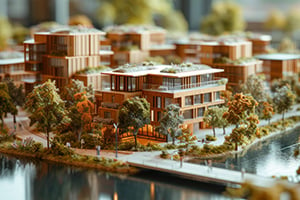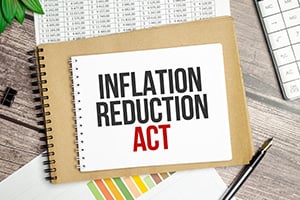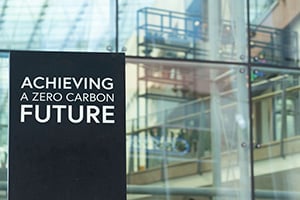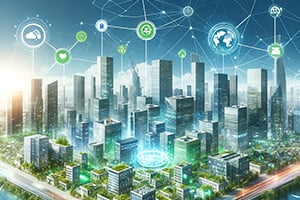By Samta Brahmbhatt
Sustainability Analyst
Sustainable Investment Group (SIG)
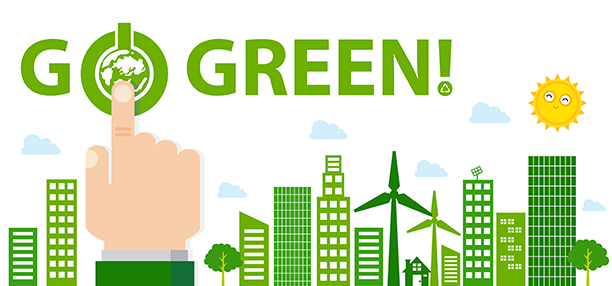
The well-known LEED certification has yet again improved its rating system to better accommodate the environmental and health sustainability impacts. LEED can be certified in residential and commercial buildings during the design and construction phase as well as the operations and maintenance phase. The US Green Building Counsel has improved the LEED rating system with LEED v4.1, an extension from LEED v4. The large-scale results so far in the update allow LEED to access more buildings worldwide in its improved certification for existing interior spaces. It has uniquely upgraded its assessment on building environmental and human health impact for existing buildings. On average, people spend almost 90% (Roberts, 1) of their time indoors, so it only makes sense for LEED to hatch down on interior improvements and expand to certify a variety of buildings globally.
Now with v4.1 Beta up and running, new ideas and proposals are heavily encouraged and accessible here. V4.1 is the most comprehensive and transparent yet; it is also more collaborative than ever with new perspectives being considered since anyone can submit ideas. With the more interactive idea behind Beta, there is a constant push for LEED O+M to improve and integrate sustainabilitymore naturally in green buildings. Transparency in the development process allows more creative proposals and new perspectives from anyone and everyone through open submissions for future enhancements.
Credits for the newer interior projects include location and transportation (1), water efficiency (2), energy and atmosphere (3), materials and resources (4), indoor environmental quality (5), and innovation (6) for a total of 100 points possible. Prerequisites and credits for each are:
- Transportation performance prerequisite
- Water performance prerequisite
- Energy efficiency practices, energy performance, and refrigerant management prerequisite. Enhanced refrigerant management credit
- Purchasing policy, facility maintenance and renovations policies, and waste performance prerequisites. Sustainable purchasing credit
- Indoor air quality, tobacco smoke control, green cleaning, indoor environmental quality prerequisites. Green cleaning and integrated pest management credits
- Innovation credit
Performance tracking for existing building includes location and transportation (1), sustainable sites (2), water efficiency (3), energy and atmosphere (4), materials and resources (5), indoor environmental quality (6), and innovation (7) which also total 100 possible points. Many of the credits have been revamped; here’s some of the most drastic changes:
- Transportation performance prerequisite
- Rainwater management, heat island reduction, light pollution reduction, and site management credits
- Heat island reduction applies the heat island effect in urban areas that occurs from energy use and its subsequent outflow of heat to a building’s surroundings. Its reduction implies strategies to counter this effect with trees and vegetation that can absorb heat or using reflective materials on pavements and roofs to cool the area.
- Water performance prerequisite
- Energy efficiency practices, energy performance, and refrigerant management prerequisite. Enhanced refrigerant management and grid harmonization credits
- Refrigerant chemicals such as CFC’s and HCFC’s have negative environmental impacts such as ozone layer depletion. HFC’s are currently used, but still have negative impacts on global warming. Management of these chemicals is important to mitigate potential leaks, issues, or negative effects.
- Grid harmonization can lead to energy production on the site of a building through solar panels, wind turbines, etc. This can be cheaper for the building and more energy efficient overall.
- Purchasing policy, facility maintenance and renovations, and waste performance prerequisites. Sustainable purchasing credit.
- Indoor air quality, tobacco smoke control, green cleaning, indoor environmental quality prerequisites. Green cleaning and integrated pest management credits.
- Innovation credit.
Both links to the latest scorecards can be accessed here for Interiors, and here for Existing Buildings. A more descriptive list of the credits and their purpose can be accessed in this link. More changes are likely based on incoming suggestions. Future goals for LEED include a focus on implementing carbon footprint measure of a structure and more transparency, which this update allows. In the more worldly approach, LEED is now recognizing more sustainable opportunities for a cleaner and healthier future.
© 2018 Sustainable Investment Group (SIG). All rights reserved.
